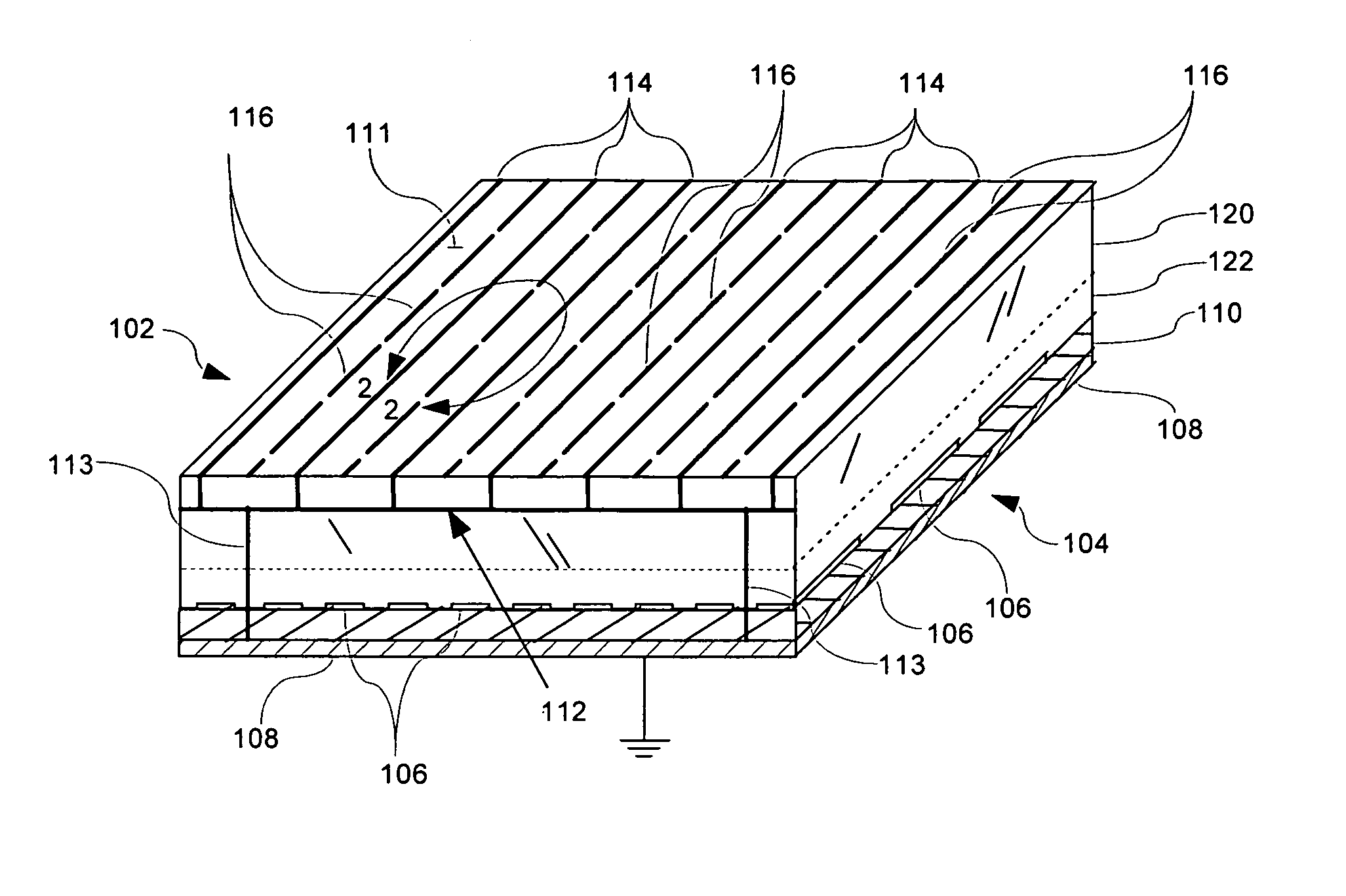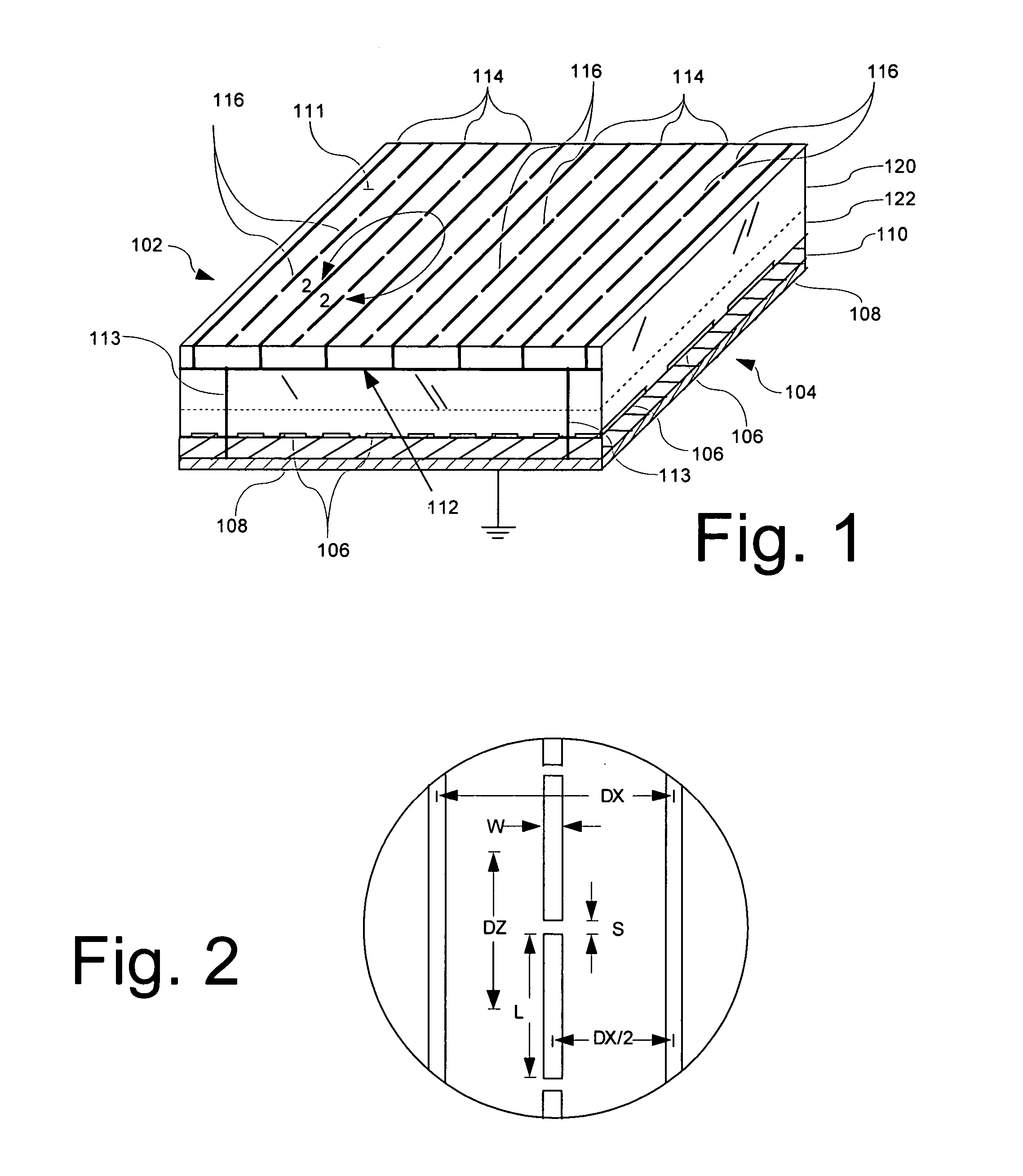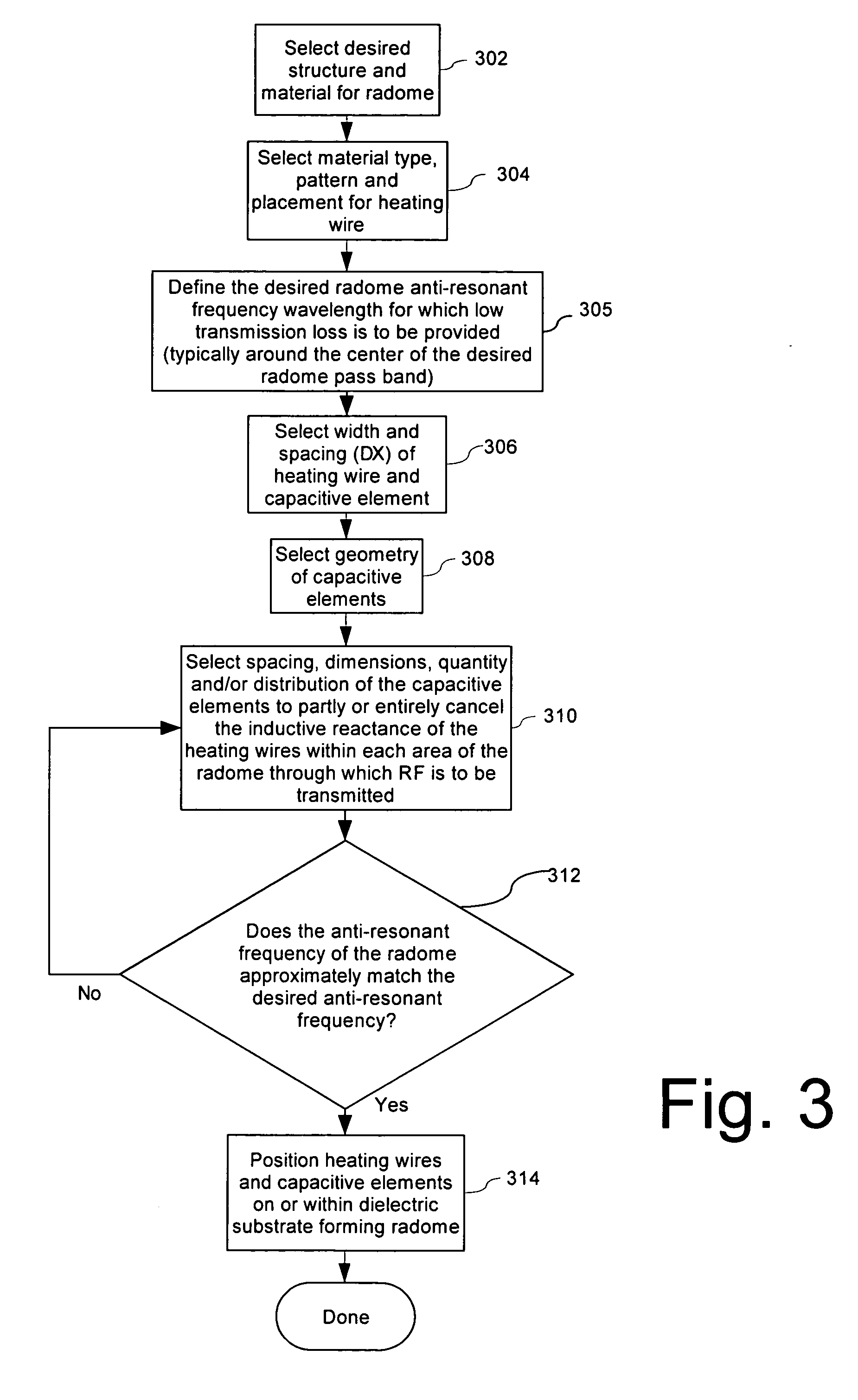Radome with detuned elements and continuous wires
a technology of radome and wires, applied in the field of radome, can solve the problems of negative interference with the rf performance of the radome, and achieve the effect of improving the lighting protection and anti-static protection of the radom
- Summary
- Abstract
- Description
- Claims
- Application Information
AI Technical Summary
Benefits of technology
Problems solved by technology
Method used
Image
Examples
Embodiment Construction
[0025]FIG. 1 is a perspective view of a portion of a radome 102 that covers or encloses an antenna system 104. The radome 102 in FIG. 1 is shown generally adjacent to the antenna system 104 in FIG. 1. However, it should be understood that the invention is not limited in this regard. Other radome arrangements are also possible in which the radome is spaced to a greater degree from the antenna system 104. For example, the radome 102 can be part of a dome structure that is constructed around an antenna that comprises a rotatable array. A wide variety of radome structures are well known in the art and all such radome structures are intended to be included within the scope of the invention without limitation. Accordingly, it should be understood that the method and construction of a radome described herein can be used in any type of radome.
[0026] Referring again to FIG. 1, the radome 102 can be at least partially comprised of a dielectric substrate 120. The dielectric substrate 120 can ...
PUM
 Login to View More
Login to View More Abstract
Description
Claims
Application Information
 Login to View More
Login to View More - R&D
- Intellectual Property
- Life Sciences
- Materials
- Tech Scout
- Unparalleled Data Quality
- Higher Quality Content
- 60% Fewer Hallucinations
Browse by: Latest US Patents, China's latest patents, Technical Efficacy Thesaurus, Application Domain, Technology Topic, Popular Technical Reports.
© 2025 PatSnap. All rights reserved.Legal|Privacy policy|Modern Slavery Act Transparency Statement|Sitemap|About US| Contact US: help@patsnap.com



